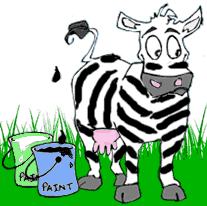Hi TYPES OF GLUE & GLUE TIPS.
DIFFERENT TYPES OF GLUES:
White Craft Glue:
This is the most common craft glue for porous lightweight materials such as paper, cardboard, cloth, and kids’ crafts.
Water is the carrier; this means easy clean up and low toxicity. Keep in mind that the glue must dry before strength is significant and the project often requires clamping to hold it in place until the glue is completely set and dry. This also means that white craft glue should not be used in applications that require water resistance.
White craft glue dries clear and is somewhat flexible. Get creative and add fillers, like fine glitter, pigment, or water-based food coloring for decorative effects.
~1 hour set time, with final cure in 24 hours.
Yellow Wood Glue:
Yellow wood glue is also water based – and is made of the same vinyl acetate polymers as craft glue. It is designed to work with wood and is immediately tacky for better hold in the uncured state. It is also generally more rigid, hence it is easier to sand. Some wood glue can also be white and dry clear. Make sure to read the labels. Again, you can add sawdust or another powdered filler for special effects.
Wood glues set in ~less than 1 hr. That said, it could take as long as 24 hours to reach full strength.
Three types of wood adhesives are available:
- Type-I exhibits some waterproof properties.
- Type-II will perform better in exterior conditions. These adhesives generally have a longer open time and can bond at colder temperatures. Both types I and II can be used for exterior applications, such as outdoor furniture and trim.
- Type-III is not water resistant and is designed for interior use only. Type-III is good for interior woodwork and trim projects.
Note: True water resistance for immersion in water requires a marine glue.
Super Glue (also known as cyanoacrylate adhesives):
Cyanoacrylate adhesives bond very quickly and to a range of substrates. They form a very strong bond and dry clear. The surfaces to be mated must fit together well to achieve good bonding. You can buy super glue in a variety of viscosities which enable some leeway in gap filling performance. However, super glues can be finicky with respect to surface contact and coverage- too much or too little can affect the bond. In general, super glues are not good for foamed plastic, unless specified on the bottle.
Cyanoacrylates work best in tensile applications that have low impact strength requirements. In their uncured state, you can use an acetone solvent wipe for cleanup. However, once cured, solvents can no longer dissolve the adhesive.
Cyanoacrylates work particularly well for balsa wood projects. Carpenters often use a two part cyanoacrylate to quickly bond mitered wood trim.
Cyanoacrylates can set in seconds to minutes, depending on formulation. It dries clear and is waterproof.
Bottom Line: Cyanoacrylates are good for projects involving: wood, metal, ceramic, leather, glass, and some plastic where bond line is very tight.
Hot glue:
The melting and cooling of polymers provides the methods of delivery and adhesion for hot melt adhesives. Hot glue is most commonly applied using a glue gun and comes in low (250°F) and high (380°F) melting options. Many varieties and performances are available depending on the polymer type. Hot glue can be used on porous and non-porous surfaces. Because of its high viscosity, it can bond uneven surfaces together and is great at filling gaps.
Hot glue is not typically used in high strength applications. And, it will not survive elevated temperatures near the application temperature. However, it provides a very quick setting option for a variety of crafts and substrates. It’s a great all-purpose craft glue for quick set up and execution, but it’s not for use by children.
Hot tip: With hot glue, you can trace patterns to form bead designs on surfaces for texture and paint over it for a 3D surface effect. Hot glue is often used to add flower or ribbon embellishment on wreaths, headbands and picture frames where stiffness and strength is not such a concern.
Pressure sensitive adhesives (PSA):
PSAs are available in sheets and dots and can be used in a multitude of craft projects to include substrates such as lightweight paper, plastic, metal, and glass.
Spray adhesives:
A spray adhesive is a contact adhesive based in a solvent that is applied by spray. When using spray adhesives, it is important that you apply in a well-ventilated room. After spraying your project, allow the solvent to completely evaporate before mating for immediate bond. Once mated, you cannot reposition your substrates.
Spray adhesives can be used with paper, foam board, fabrics, photo, and felt. Specialty contact adhesives are also available in a can to roll or brush on for larger, more demanding projects that involve wood, metal, and plastic sheet laminates.
Application example: Spray adhesives are an excellent choice for adhering photos or fabrics to a foam board back.
Fabric adhesives:
Fabric adhesives can be liquid white glues like polyvinyl acetate (PVA) types. A variety of products cover lightweight to heavyweight fabric bonding, so it is important to get the correct product to match the hand or drape of your project. Some versions are safe for washing and dry cleaning, but it’s important to read the glue’s label first.
There is an expanded selection of nonwoven tapes and fusing adhesives in rolled good form, which range from highly flexible to stiff for fabric and leather projects and garment construction. These can be found in sewing and fabric stores and can bond permanently without bleed through for a very durable craft.
Fabric adhesives can be used to fix a hem that is falling apart and for DIY projects like making headbands or constructing fabric/foam laminated computer sleeves.
Epoxy:
Epoxies are generally two part systems designed for high performance bonding. While epoxies can be formulated to suit many applications, they are generally very hard, durable adhesives that bond to many substrates successfully in more extreme environments. Epoxy adhesives can exhibit a range of flexibility and clarity as well as cure speed.
Epoxies have excellent gap filling properties due to their high cohesive strength.
Polyurethane:
Polyurethane adhesives bond a variety of surfaces. They bond to textile fibers, metals, plastics, glass, sand, ceramics, rubber, and wood.
Polyurethane is a multipurpose glue that comes in one part and two part options.
Polyurethanes can work well on a wide variety of wood species, particularly on woods with high moisture content or on oily woods, where other glues are not as successful. Clamping is required until strength is built; a few hours. Full strength is achieved in six to eight hours for a very strong and tough bond.
Before completely cured, polyurethane adhesives can be removed using solvents such as mineral spirits or acetone. Dried glue can be sanded.
Glue Sticks:
Glue sticks are great for kids! They are a low bonding adhesive, but do provide a permanent bond on various types of paper to include cardboard, foam board, and poster board. Glue dries clear.
Application examples: sealing envelopes, applying labels, paper crafting, art projects, scrap booking.
CRAFT GLUE TIPS:
1. Not all glues are created equal. There are many variations within each category and from one manufacturer to another. Read the labels for information on toxicity, ventilation, recommended handling and use, as well as durability in a variety of environments.
2. Apply adhesive evenly and remove excess quickly. Immediately clean and cap the adhesive container to maintain shelf life and performance.
3. For optimum bond strength, it is imperative that the surfaces are residue and dust free. If possible, clean surfaces prior to bonding with a lint-free rag dipped in isopropanol. Let them dry thoroughly before applying adhesive.
4. For crafts and repair projects requiring some durability and strength, you can often aid adhesion by roughening the surfaces with fine grit sandpaper to provide “teeth” for adhesives to interlock. If you cannot abrade the surface, try wiping with isopropanol or acetone before applying adhesive. This is particularly helpful for smooth, glossy surfaces that can be harder to bond.
5. Experiment with the glue on scrap pieces of your project. Check for appearance, adhesion and and resulting bond strength.

.jpg)
.jpg)




.jpg)
.jpg)
.jpg)
.jpg)
.jpg)
.jpg)
.jpg)

.jpg)
.jpg)
.jpg)























.jpg)













